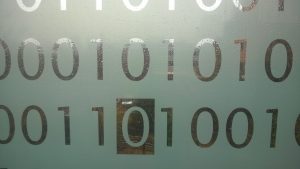
Photo credit: Mateusz Dach
I was a Brittain Fellow at Georgia Tech from Fall 2016 until this past August, when I accepted a full time job at RedMonk, a developer-focused tech industry analyst firm. Because the job offer came in days before the Fall 2018 semester started, I had concerns about the timing: I wanted to be able to teach my assigned Fall classes rather than backing out at the last minute and leaving my colleagues and students in the lurch. As I note in the introductory post on my RedMonk blog, my new employer came through for me on this issue, and gave me the OK to finish out the semester while starting my new job as an analyst.
As I settle in to my new tech industry role, I am also teaching (now as a Visiting Lecturer) LMC 3431: Technical Communication Approaches. The course is a co-requisite for CS 3312: Project Implementation; the two courses together constitute the second part of a two-part Junior Design course sequence that serves as a degree requirement for many Computer Science (CS) and Computational Media (CM) majors at Georgia Tech. The CS co-requisites of the course sequence are taught by CS faculty; the LMC components are taught almost exclusively by Brittain Fellows.
While holding down two jobs has resulted in a very busy semester for me, it has also afforded me a unique opportunity to contemplate the role of technical communication (“tech comm” for short) in two spaces that I have, up until now, experienced separately: the tech industry and the university-level classroom.
Tech Comm and Industry Practice
Although tech writing is often the first thing that comes to mind when most people think of tech comm, tech comm per se covers a broad range of practices in a variety of industries. In its definition of tech comm the Society for Technical Communication (STC) lists a number of related jobs including Technical Writer/Editor, Instructional Designer, Web Designer, Web Developer, and Trainer. In addition, a quick look at the STC job bank reveals postings for a Digital Communications Manager, Webinar Specialist, and even a freelance gig for a Conference Slide Proofreader. Technical communication proficiencies are therefore vital beyond tech writing positions. While they are key, for instance, in documenting the specifics of wind turbines or jet engines, they can also be leveraged to direct communication and marketing for medical research centers, conduct usability evaluations for software companies, or author the perfect TED Talk.
As the list of communicative practices above demonstrates, effective technical communication requires skills beyond writing. One such skill is working with Subject Matter Experts (SMEs) to gather information and package it for targeted audiences. The packaging can vary in mode (written, oral, visual, electronic) and take on different formats (installation instructions, end user guides, video tutorials, user interfaces) that often must keep pace with delivery expectations driven by technological advances. Tech comm is a field where practitioners have to learn a lot as they go (often becoming SMEs in the process), and where flexibility and adaptability are key.
My own experience as a tech comm practitioner started with freelance tech writing jobs that peppered the copy editing gigs I took to pay my way through graduate school. I composed slides for tech forecasts, revised NIH grants, edited chemistry dissertations, and learned more about the makeup of guinea pig hearts than I thought possible. For me, a software tech writing gig turned into a full-time job. This meant learning field-specific concepts and processes that went along with the methodologies, coding languages, frameworks, and other underlying technologies my company used to build, test, and document our software. While learning these new concepts was in itself valuable, I also became interested in the ways that knowledge was created, documented, and shared both internally and externally; it is this interest that eventually led me to Georgia Tech and the tech comm classroom.
Tech Comm in the Classroom

Glass backing of the Cooley Bridge (also known as the “Binary Bridge”) that connects Georgia Tech’s College of Computing and Klaus Advanced Computing Buildings
I began my Brittain Fellowship with years of experience as a tech comm practitioner, but little knowledge of how tech comm worked in the academy or the classroom. My prior teaching experience included literary survey courses, advanced classes on Arthurian legend and medievalism, and a range of writing courses. Luckily for me, my move to teaching tech comm was supported by a postdoctoral tech comm seminar that I and the other tech comm instructors in my cohort were required to take during our first semester at Georgia Tech; the seminar provided a useful introduction to tech comm in general and the role it played at our school in particular.
As an academic subject, the availability of tech comm offerings in higher education varies by institution. Although some schools offer majors, minors, and/or graduate degrees in tech comm, others may offer only introductory classes (or none at all). As the Association for Teachers of Technical Writing notes, while some of its members belong to tech comm departments, others are associated with complementary research programs including media, engineering, rhetoric, writing studies, and English. Likewise, while some institutions maintain tenure-track professorships and research positions in tech comm, others might rely on instructors or adjuncts to staff tech comm courses.
The learning goals and objectives of tech comm courses and programs also vary. Some help prepare students for a career as a tech comm practitioner; others aim to provide a general introduction to the field and its practices. Still others can be tailored to the tech comm needs of a specific discipline. Georgia Tech, for instance, offers a range of tech comm courses, including LMC 3403: Tech Communication (an introductory course), LMC 3408: Rhetoric of Technical Narratives, and LMC 3412: Communicating Sci/Tech. Notably, Georgia Tech does not offer a tech comm major, but does include Communication among the threads that LMC majors can choose to help shape their degree. We do, however, offer tech comm courses specifically tailored to CS and CM majors (LMC 3431 and LMC 3432: the courses offered as co-requisites to the CS Junior Design sequence), and these are the courses that I have the privilege to teach.
Crossing the Streams
Teaching tech comm to CS and CM majors at Georgia Tech has begun to show me how productive it can be when the knowledge and practices from industry intersect with those in the classroom. Although my students will in all likelihood not become professional technical communicators, their ability to practice effective technical communication will be critical in their future careers. Indeed, as my colleague Rachel Stephens has pointed out, qualities such as communication skills often help determine success in finding the perfect job.
It is therefore critical for software developers—which many of my students will become—to hone their communication skills in team, client, public, and administrative settings. This includes being willing and able to participate not only in the creation of software, but also a variety of communicative deliverables and processes that further team productivity, product development, and education and adoption of a given technology or product. Furthermore, such skills are not only key for personal advancement, but are critical to the tech industry in general, as fostering communication skills and processes at all levels offer large potential returns on investment. In terms of product alone, effective tech comm skills can improve product creation, design, implementation, testing, marketing, user adoption, user feedback cycles, and overall viability. In terms of productivity, such prioritizations can greatly benefit onboarding, training, environment, talent recruitment, and talent retention.
In short, tech comm is not just for professional technical communicators or academics, and the tech industry and tech comm classroom have much to offer each other. To my mind, these two concepts are vitally important, so much so that I will be crafting a series of articles centered on them: a series that leverages the perspective afforded by my simultaneous affiliations with academia and the tech industry. To further foster cross-disciplinary and cross-industry access to the series, it will be co-published on TECHStyle, the online journal of Georgia Tech’s Brittain Fellowship, and Sometimes Dragons, my analyst blog at RedMonk.
In the coming weeks you can expect to see series articles about the CS Tech Comm/Junior Design course sequence that I teach, including a piece on the public exposition assignment we introduced to the sequence in Spring 2018. As the fall expo is coming up on December 3, you can also expect a recap of some of the brilliant work that Georgia Tech CS and CM students present there. While I already have a tentative list of topics for spring, you can always find me on twitter (@drkellyannfitz) or email me at kellyann@gatech.edu if there is a particular tech comm issue you’d like to read about in this series.
Note: A version of this article has also been published at Sometimes Dragons, KellyAnn’s RedMonk blog.
